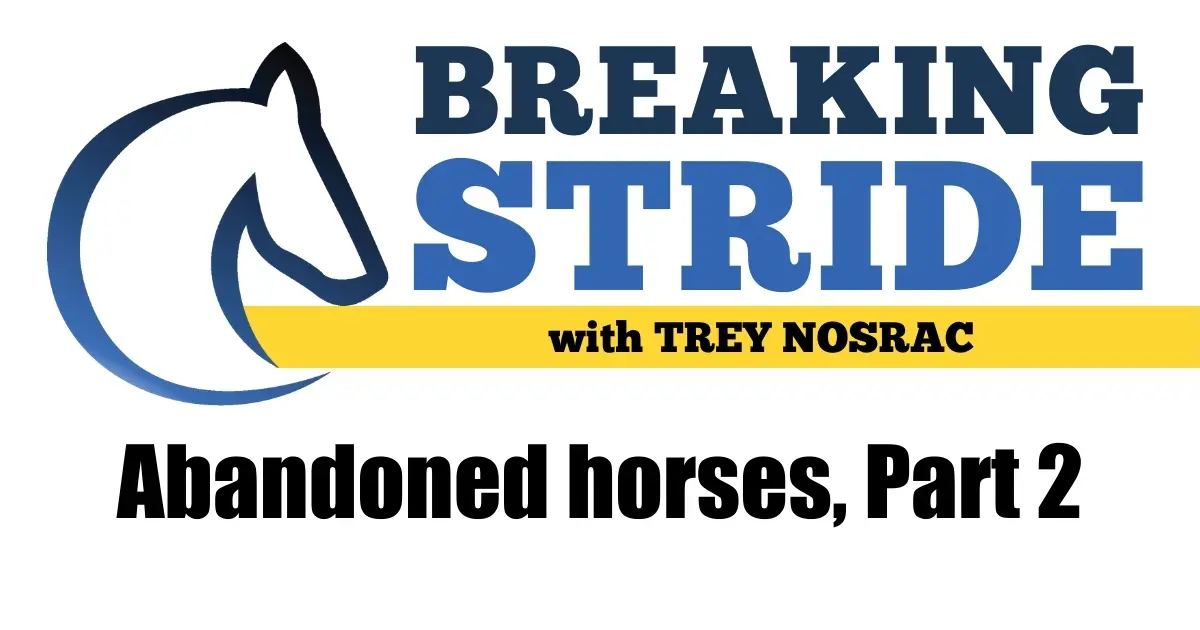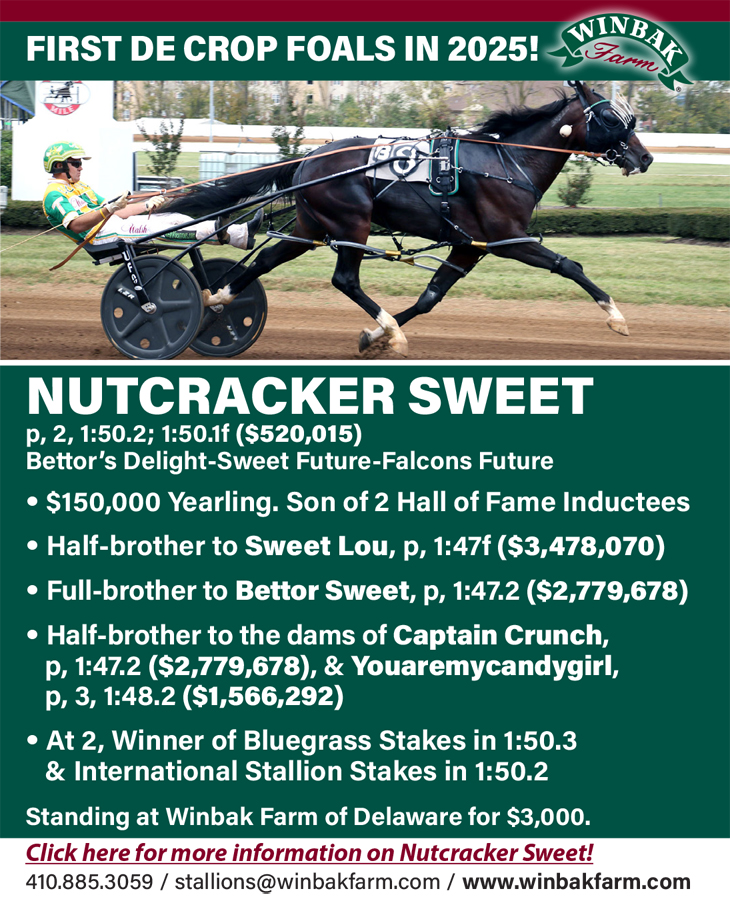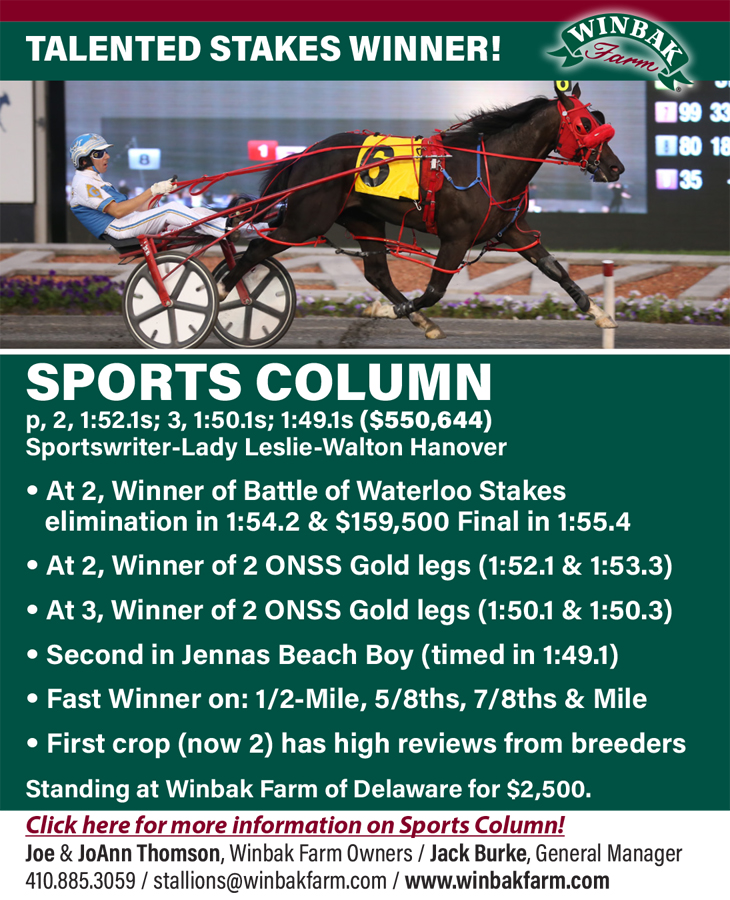Abandoned Horses, Part 2
by Trey Nosrac
Part 1 ishere.
Julia and Walt Binghamton, a middle-aged couple, felt the morning sunlight on their shoulders as they sat in matching Adirondack chairs on the deck of their secluded wooded estate. Less than 30 feet from their chairs, two horses tugged strands of hay from a bale inside their large, enclosed lot. Forty-five minutes earlier, their morning jog had been interrupted by the unexpected discovery of these horses tied to the black steel fencing with sharp-end pickets enclosing their property.
Julia removed her sunglasses and studied the horses. She ran her fingers through her long brown hair and said, “That policeman was useless.”
Walt, a stocky man, who transferred to Cleveland from London two years ago, nodded, “And he was a cheeky bugger.”
One of the horses, the one with a white patch between his eyes, shuddered, snorted, and began walking in a slow circle. Julia asked, “Did you notice that they are both males? One has a white neck tattoo, and the other does not.”
Walt, “Indeed, we should use that tattoo as our starting point.”
“Starting point for what?”
“I have no idea, my dear. Find the owner? Return them? Report someone for negligence? Call an exterminator, a veterinarian, or some horse organization?”
“I’m calling my niece, Sarah. She is into dressage. Remember we went to watch her near Ocala?”
“Jolly good idea. Consult with an equine expert.”
“Sarah is a dingbat, and so is her mother. But both of them know the horse world.”
Julia pulled her phone from her yellow jogging jacket and went to the house. Twenty minutes later, she came out with a sheet of paper and two chilled bottles of mineral water.
“My sister and niece were quite helpful. They can chatter about horses nonstop, but they suggested a plan.”
“Bravo.”
“Horse organizations used to use tattoos for identification. About a decade ago, they began microchipping horses. Various organizations maintain databases to track microchipped horses. These databases help verify ownership and track lost or displaced horses.”
Walt unscrewed the cap from his water bottle, took a swig, and said, “Very convenient and high-tech. How many databases?”
“Dozens, but several organizations share microchip data. Sarah and my sister feel that since we are in Ohio, the odds suggest a [she glanced at the paper] standardbred horse.”
“Which is?”
“The type of horse that pulls an Amish buggy or that race around racetracks with carts behind them.”
“How do we know for sure?”
“Sarah told me to call a large animal veterinarian and verify that they have a chip reader. She suggested one in our area. I phoned him, and he will stop by at three this afternoon. He can check their health and verify if they are standardbreds or some other breed.”
“Then what?”
Looking at the sheet of paper, she said, “If they are standardbreds, she said to contact the United States Trotting Association. They maintain an internet-based computer database called Pathway. This database provides complete and official data to identify them and their ownership.”
“Well played, my dear. Agatha Christie would be proud. Now we await the person with the magic reader.”
At 3:15 p.m., Dr. Owen Tidwell, a tall, young man with a large Adam’s apple and protruding ears, stepped away from the horses and joined Walt and Julia on the porch. He was brief.
“Both horses are chipped. Both are male standardbred pacers and appear to be well cared for. The white-faced horse is 7, the other 8.”
Julia asked, “Is that old? What does pacer mean?”
“No, not very old. Horses can live well into their 20s. A pacer refers to how this breed moves its legs when racing. Harness horses either pace or trot. It’s a little complicated.”
“What else can you tell us?”
“I know a guy at the USTA. Let me make a call.”
Dr. Tidwell returned to his truck. As he spoke on his phone, he jotted down some information. After the conversation, he walked over to Walt and Julia.
“Here’s what I found out. Both horses were born at a breeding farm in Baltic, OH. He reviewed his notes and continued, “Currently, a Lewis Tremeau owns both. The horse with the white on his face is named Drive By Hooting.”
Walt said, “Oh good heavens, that’s the worst name I have ever heard.”
“The other is named Iggy Jiggy.”
“Second worst name I have ever heard.”
Dr. Tidwell smiled, “Yeah, I think you should use nicknames for these guys.” He looked at his notes and continued, “The breeding farm tried to sell them at a yearling auction. Yearling means they were 1-year-olds. Drive by brought $2,000, Iggy bought $2,500, but both were buy-backs. That means the owners selling them did not get enough money. The buying public did not like the pedigrees or the horses’ appearance. The ownership title transferred from the commercial breeding farm to Lewis Tremeau of Amherst, OH. There has been no additional activity since the 2019 ownership transfer.”
“What about racing?” Julia asked.
“The horses never raced.”
Julia paced across the porch, stopped, looked hard at the horses, and said, “So the last official record is that these two were in Amherst, OH, under the ownership of a Lewis Tremeau.”
“That’s where we are. Do you want the names of some horse rescue organizations?”
Julia looked again at the horses, “No, not yet. Let me visit our friend Lewis from Amherst.”
















